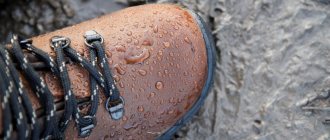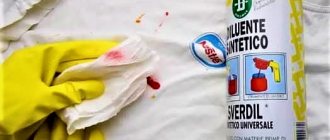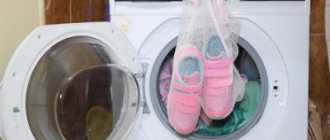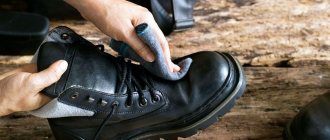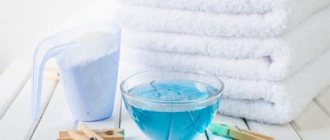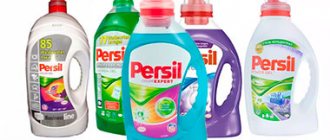Changes occur regularly in every person's wardrobe. At the same time, things that are practical and attractive in appearance remain in it for a long period. Among the factors that provoke spoilage are excessive humidity. Dyed, wool and artificial materials suffer the most from water.
To prevent rapid wear and tear of shoes and clothing, special compounds are used. Impregnation can be purchased in the form of a spray, cream, or laundry mixture. It forms a layer on the item that does not let moisture in, but allows it to evaporate. Such products are especially popular among tourists and athletes. The need for water-repellent impregnations arises among people who are forced to work outdoors in any weather.
Aerosols can be universal or special. If the water-repellent agent has been selected taking into account all the criteria, the treated item will not deteriorate due to the negative effects of moisture, salt and snow. At the same time, the structure of the material remains intact, and the appearance retains its original freshness.
Water-repellent impregnation for clothes
Hydrophobic impregnation for shoes and clothing is a product that envelops fabric fibers with a film. It allows air to pass through, but remains impermeable to liquids. The principle of operation of this composition is quite simple. Over a long period of time, a material coated with impregnation attracts water molecules less strongly than in the absence of a protective layer. Carbon solvents or water are used as a base. Thanks to the thoughtful composition of the water-repellent liquid for shoes and clothes, moisture that reaches the surface rolls off into large drops.
Apply a water-repellent clothing spray before going outside. It is used to process sportswear, hats, jackets, travel equipment, children's overalls, special equipment, and shoes. The list can be supplemented with outdoor curtains, fabric inserts on strollers and additional accessories. After the finely dispersed composition is sprayed on the clothes, you need to wait until it dries completely. Impregnation molecules are characterized by low hygroscopicity. This is what can explain the duration of action of the composition.
Over time, the protective layer is washed off, so it needs to be renewed regularly. The item must be prepared before processing: cleaned and dried. Ignoring this stage is fraught with a violation of the overall integrity and loss of ventilation properties. To remove serious stains, use a soap solution and a brush.
Advantages and disadvantages
Pros and cons of water-repellent fabric:
Such materials have a number of positive qualities in comparison with other types of textiles:
- Weave diagonally. A special weaving technique allows you to achieve high water-repellent properties of the fabric.
- High density. Moisture-resistant fabric has a smooth and slippery surface, from which drops of water flow freely and do not fall deep into the surface.
- Versatility, comfort and practicality. Synthetic thread in the fabric structure helps to achieve increased consumer properties: bright color, strength, high durability and long service life of finished items.
Water repellency process
Disadvantages of such clothes:
- Pronounced disadvantages are typical for inexpensive materials consisting mainly of 100% synthetic thread. They leak water and are not safe to wear.
- Good membrane clothing is very expensive.
- It can be damaged if washed incorrectly.
- Short-lived.
- For such things you need special thermal underwear.
garden furniture
It is necessary to remember about caring for such fabric. Before using the impregnation, the item must be washed, for this you must use the following rules:
- First, check the product tag. There may be instructions on it.
- The washing machine must be completely clean; if there are powder residues, they must be removed with a wet cloth. This is a very important point.
- Use only liquid detergents for membrane materials.
- The washing temperature should be no more than 40 degrees, otherwise the clothes will lose their properties.
Type of fabric: Tarpaulin
- Rinse several times until the water becomes clear.
- It is allowed to squeeze the product, but at low speeds. The machine simply will not be able to completely squeeze out the product, so it will be very heavy when taken out.
Important! Do not use air conditioners, stain removers or bleaches as they may damage the integrity of the product. It is recommended to dry at room temperature, in a vertical position.
Avoid direct sunlight to avoid damaging the structure and properties of the material.
Children's costume option
In conclusion, it must be emphasized that things made from waterproof materials are gaining popularity. Previously, these were only suits for fishermen and hunters, but now almost everything can be made from such fabric, from outerwear to car covers.
Rating of the best water-repellent products for clothing
Caring for items must be carried out based on the characteristics of the fabric. The situation is often complicated by high levels of humidity. Water repellents for shoes and clothing can be purchased at a household chemical store. The range presented is in most cases quite extensive. When choosing a composition, you need to focus on the rating, in the compilation of which experts took into account properties, quality and cost.
Drycare
This universal impregnation is produced by a domestic company. It is used to process fabric shoes, clothing made of velor, suede, leather, textiles, and nubuck. Regular application of a specific composition leads to the formation of a durable protective layer. Among the distinctive features are the absence of silicone in the composition, budget price, and efficiency. No disadvantages have been identified with this impregnation.
Salamander Universal Sms
The popularity of water-repellent detergent for clothing is due to its reasonable cost, high efficiency, ease of use and bubble capacity. This impregnation cannot be sprayed onto objects made of patent leather. When using a multi-purpose composition, there are no snow, water, or salt stains.
Grangers Clothing Repel
This water-repellent impregnation for clothing is characterized by high cost. Despite this, it is quite popular among professional athletes and tourists. The product is based on a special formula. It provides protection for outerwear. The level of wear resistance increases and the attractive appearance is maintained. There are no downsides to this product.
New items at Kant:
- Temporary changes to store opening hours
- Cross-country ski equipment for athletes. Full set. Everything is ready for the 21/22 season
- New “winter” collections. Hurry before temporary closure
- Updated Thermos collection
- It's warmer with the Arctic
- Bobber thermoses. Record heat retention
- 10% discount on winter goods for Second Hand customers
- Seasonal bicycle storage with maintenance
- A clear victory for Deuter in independent research. Backpacks and sleeping bags are the best!
- Collection "Autumn 2021" from Petzl in "Kant". Flashlights and climbing equipment
- The best autumn adventures - with Salomon clothing
- Mizuno super-collection “Winter 21-22” is available in “Kant”
- The new Saucony collection “Winter 21-22” is in “Kant”... and Endorphin_2 too”!
- Running “rockets” from adidas exclusively in Kant!
- Everything for cross-country skiing 2022 -2022 already in Kant!
- There is no bad weather! The right Reima clothes for a child in the off-season
- New collection of KV+ ski poles
- Custom anatomical insoles in 15 minutes
How to choose a hydrophobic spray, selection criteria
The main factor that you should pay attention to is the composition of the product. The list of ingredients includes mink oil, as well as seal or goose fat. These natural substances are present in the spray in small concentrations. Their function is to create an invisible water-repellent layer.
We recommend:
How to get rid of ants in an apartment forever
Impregnation for suede
When choosing impregnation for suede, they are guided by the amount of fluorocarbon resins. If they are replaced with cheap silicone, you should not expect high quality. Instead of repelling liquid, the film will impede air movement. The presence of streamlined names in the composition indicated on the label is considered a significant reason to doubt the quality of the product.
There are many varieties of moisture-repellent protective sprays. The manufacturer usually indicates on the packaging the material for which the impregnation is intended. Among the possible options:
- gore-tex;
- ropes;
- cotton;
- down products;
- gloves;
- boots made of nubuck, suede and leather;
- sleeping bags;
- sport shoes.
Hydrocarbon solvents are most often sold in aerosol packages. Mixtures prepared on the basis of water are poured into containers equipped with a mechanical sprayer. Due to the specific ingredients, processing should be carried out in a room equipped with a well-designed ventilation system.
Experts give preference to products sold in tourist and sports stores. Before purchasing, you should ensure the suitability of the product. The date of manufacture of impregnation for membrane garments is indicated on the packaging. The brand is of great importance. The leaders include Twist, DryCare, Nikwax, Salamander, Collonil, Grangers.
Recommendations for use
How to use water-repellent impregnations:
- Hand washing is recommended to ensure long lasting protective coating. Before using the product, the item must be clean and grease-free. Dry or wet - this is indicated on the package.
- To properly protect the fabric from rain, snow or any other moisture, it is recommended to wait a day after using the impregnation. During this time, it is better not to wear the item.
- A grease or food stain can be blotted with a paper napkin if it gets on an area that has already been treated.
- How water-repellent impregnation is washed off: with frequent washing, under constant exposure to weather conditions, this process occurs faster. Then it will need to be reapplied.
- Products containing harmful substances are used outdoors or near an open window. Many impregnations cannot be used near open flames. This should be taken into account when processing an awning or tent.
How to treat fabric so it doesn't get wet? It depends on the material and its purpose. What works for a tent may not work for a leather jacket. If you don’t want to think again, it is recommended to choose a universal remedy.
© 2022 textiletrend.ru
Waterproof fabric: name and types
Water-repellent fabric is made from polyester and nylon. The most common types:
- Taffeta. Made from nylon or polyester, the reverse side is treated with a protective film. This soft, dense material has an increased steam absorption system, does not deteriorate under the influence of water, does not change color and does not shrink when washed. Mostly used as lining fabric. Winter jackets are mainly made from it.
- Taslan. The material is polyamide; it has a special appearance, similar to a small scar formed due to rep weaving of threads. Protected from moisture and dirt by milky impregnation. Also removes sweat. Favorite fabric in the industry for making jackets.
Weaving matting
- Oxford. Dense, coarse, water-repellent fabric; matting weaving is used to create it. Very resistant to chemicals, has high durability and heat resistance.
- Duspo. Of all the waterproof materials, the cushion has a matte surface, which gives things a chic look. Enjoys great success in creating multi-season children's clothing.
- Membrane. The material was created using new technologies, is completely impenetrable and protected from drafts. It is created by spraying a transparent polymer porous mesh onto a synthetic fabric. Membrane items perfectly repel water, do not get wet in the rain, and are used in the manufacture of protective clothing for rescuers, equipment for mountain sports, etc.
- Acrylic. Tolerates frost quite well and is resistant to water and dirt. It is made in half with natural and synthetic fabric. Very durable material.
- Tyvek. Lightweight, but at the same time dense, waterproof fabric. It is mainly used to make tents, car covers and marquees.
Tyvek
Tarpaulin. It has increased wear resistance and water resistance properties. Has a hydrophobic membrane.
